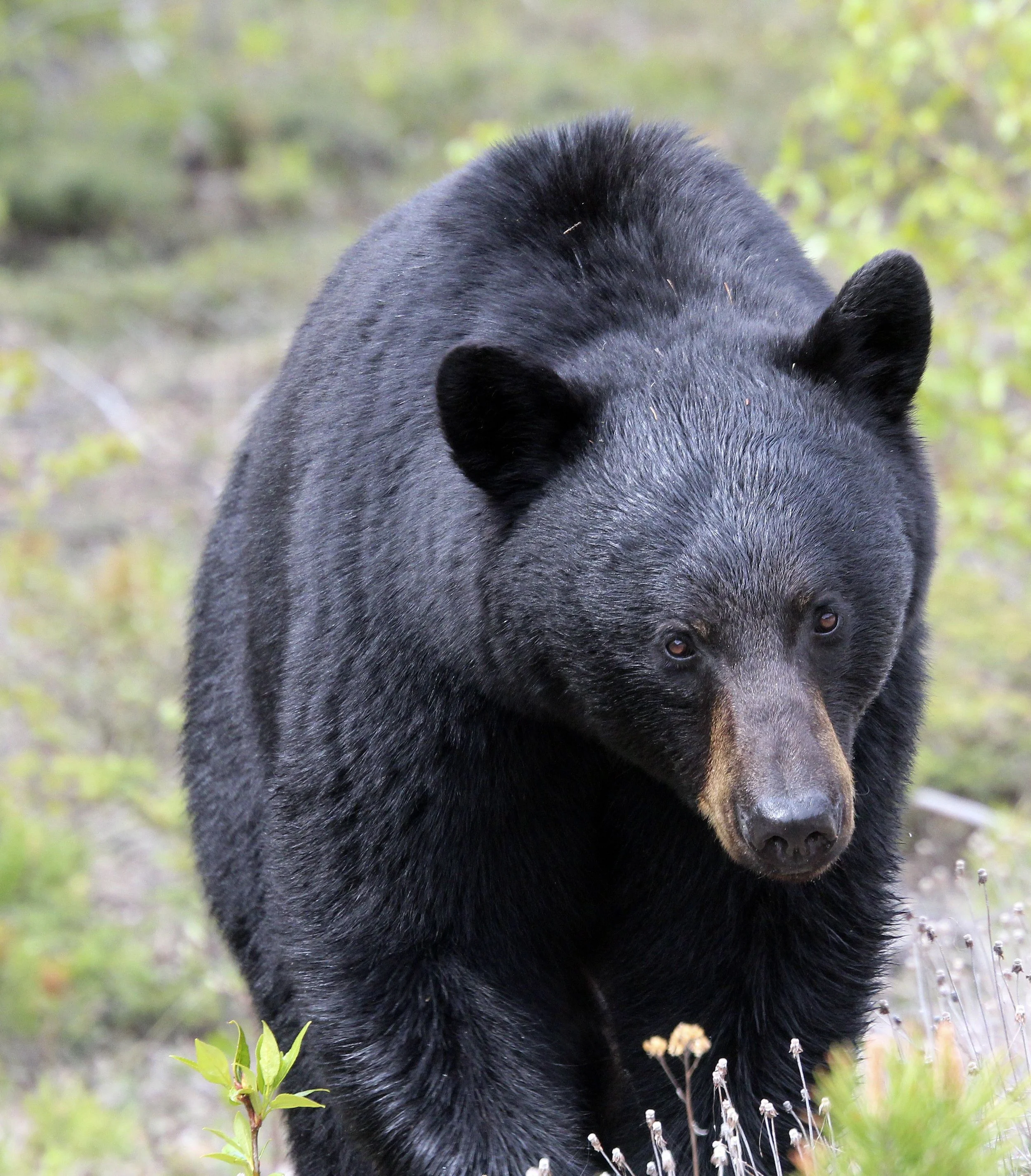Why do people fear bears?
Images vs Reality
Outdoor magazine artists have historically depicted bears as startled, angry, charging, or attacking and are typically shown with their lips drawn back in an unnatural expression of supposed anger. The same is true for bears depicted as entering tents and houses. And unfortunately, the use of incorrect terms when referring to bears still exists in our media today.
Bears are not like cats and dogs that bare their teeth when they feel defensive: bears typically run away, climb for safety, or show harmless bluster with no effort to show their teeth. Instead of baring their teeth, black bears signal that they are uneasy by making their muzzle long and narrow. They may clack their teeth and make a huffing sound, or paw the ground.
Blustery behavior is not a prelude to attack or a sign of aggressiveness. It simply means the bear is nervous and is demonstrating that he/she needs space.
Their remain some myths and misconceptions of our black bears. Learning about their behaviours and their communications will enable you to have a safe and respectful coexistence with these beautiful and intelligent animals.
FOLKLORE
Credited to ‘Bears without Fear’ by Kevin Van Tighem
Perhaps no other animals have so excited the human imagination as bears. References to bears are found in ancient and modern literature, folk songs, legends, mythology, children stories, and cartoons. Bears are among the first animals that children learn to recognize. Bear folklore is confusing because it is based on caricatures, with Teddy Bears and the kindly Smokey on one hand and ferocious magazine cover drawings on the other. Dominant themes of our folklore are fear of the unknown and man against nature, and bears have traditionally been portrayed as the villains to support those themes, unfairly demonizing them to the public.
“Bears are intrinsically social, they need to be social, but our species has not let them do so because of our own profound fear.”


